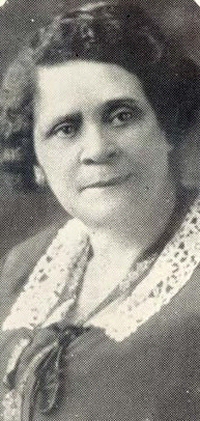
Hallie Quinn Brown
Hallie Quinn Brown was born in Pittsburgh, Pennsylvania in 1845, the daughter of two former slaves. Her father, Thomas Arthur Brown, became known as “Mr. Brown, the walking encyclopedia.” Brown’s mother, Frances Jane Scroggins, was also well educated; she was an unofficial advisor and counselor to the students of Wilberforce school, a private, coed, liberal arts college. Both Thomas and Frances were actively involved with the Underground Railroad. Her parents’ commitment to the cause would later influence the organizations Brown founded and participated in.
Brown’s family moved from Pittsburgh to Canada in 1864 and then to Wilberforce, Ohio, in 1870. In Ohio, the author experienced her first all black school at Wilberforce University. Brown graduated in 1873 with a Bachelor of Science degree. After graduation, she began teaching on the Senora Plantation in Mississippi and went on to teach on several plantations during her life.
Her efforts focused on improving the literacy levels of black children who had been denied the chance during slavery. Several years later she moved onto Columbia City Schools and then to Allen University in Columbia. Brown served as the Dean at Allen University and was appointed principal of Tuskegee Institutes in Alabama from 1892-1893, where she worked with Booker T. Washington.
Brown began traveling in 1894 as a lecturer and public speaker for African American culture and temperance. Her travels stopped in 1899, but not before she spoke before Queen Victoria on African American culture and temperance. She spoke at the 1895 convention of the World’s Women’s Christian Temperance Union in London and was a representative for the United States at the International Congress of Women in 1899.
In addition to her speeches, Brown authored several prose collections. Brown’s works commonly address the topics of historical importance and social change, often using African American vernacular to stress these messages with the goal of helping to educate. As Susan Kates writes, “Brown recognized that social change could only come through an educational venture” (Kates 69). Using African American vernacular, Brown displays the importance of her heritage and her effort to explain the difficulties blacks faced with language.